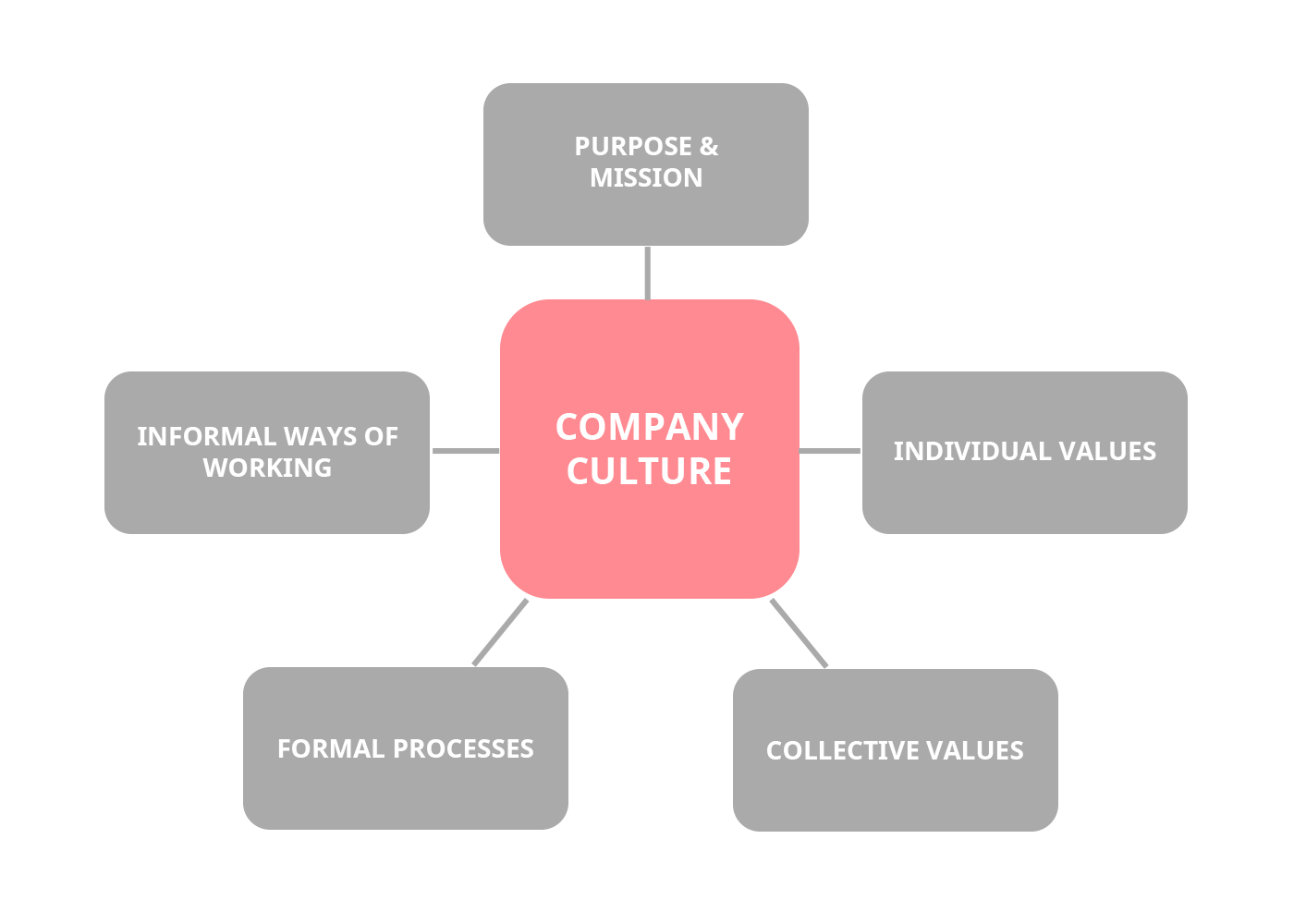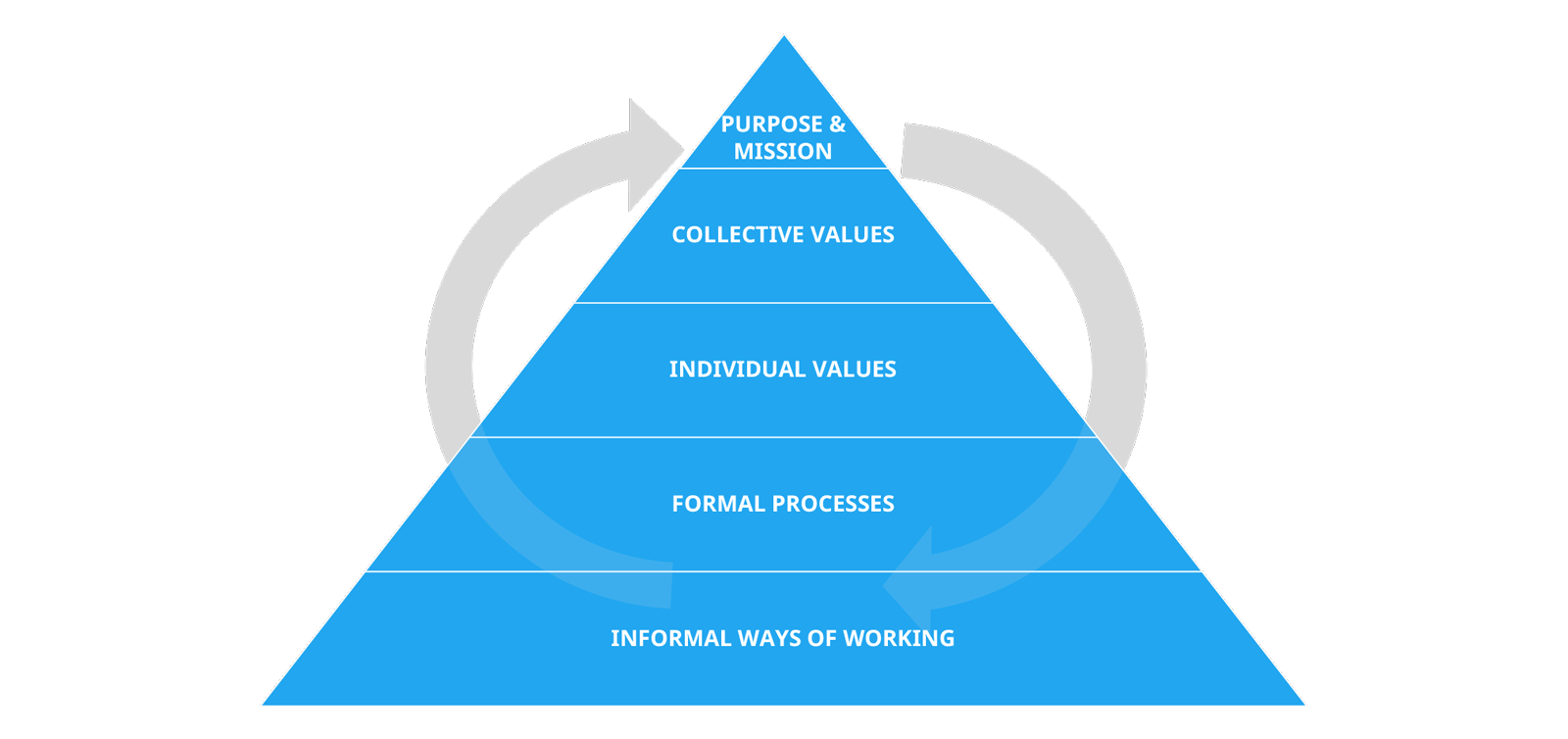Top-down or Bottom-up – How to Build an Innovative Culture?
When we ask innovation leaders why they haven’t been able to reach their innovation goals, probably the single most common explanation is their company culture.
As we all know, company culture is such an all-encompassing concept made up of so many different elements that changing it is extremely hard.

Innovation leaders are often put in a very challenging position. They’re tasked with innovating and shaping the future of their business, yet they often aren’t given the authority or the resources to make most of the calls that would be needed to really make change happen.
Yet, even though this obviously is quite a challenge, you shouldn’t use it as an excuse. Even if you aren’t the CEO, you can still shape your culture to be more innovative, which will naturally lead to more innovation.
The question is, should cultural change start from the top-down, or from the bottom-up?
Table of contents
The Two Approaches to Transforming Culture
There are two basic approaches to shaping culture: top-down and bottom-up.

The top-down approach starts by redefining the mission and values of the organization, then seeks to cascade the changes to the organization at large.
The bottom-up model, on the other hand, approaches the problem from the opposite direction. It starts from the people, processes and the informal ways of working, identifying barriers to innovation and fixing those one by one.
Each of these approaches have their own merits, as well as their challenges.
The Most Common Challenges in Creating a Culture of Innovation
Before we can choose the right approach, we should look at some of the challenges that each of them is typically associated with.
The Top-down Approach
The first and most obvious challenge with the top-down model is that unless you’re at the very top, you likely can’t change the collective values of the entire organization.
Even if you are able to do that, changing the collective values won’t likely affect the values of the individual employees that make the organization up. If these end up being misaligned, you’ll find cultural change to be sluggish, at best.
Thus, while it’s quite easy to change the company’s values on paper, the hard part is taking those new values and putting them in practice.
Without concrete changes to reflect the new values, it’s quite likely that nothing changes, except for the posters on the wall and a couple of pages in the annual report.
This brings us to the challenges associated with the bottom-up approach.
The Bottom-up Approach
The good thing about the bottom-up approach is that everyone can affect the way they themselves work, or the way their team works.
Thus, even if you are unable to change the entire organization, you can at least work within your own sphere of influence.

Also, by looking for and addressing all the issues that are preventing you from innovating, you’ll inevitably improve the innovation capabilities of your organization, which helps you to gradually get closer to your innovation goals.
There are, of course, a few challenges with this approach as well.
The most obvious challenge is that it can be tough to move beyond your own sphere of influence, which makes it hard to build momentum for cultural change at large.
Furthermore, when interacting with the rest of the organization, you’ll inevitably find yourself facing quite a few hurdles that can hinder, or even prevent you from making progress. Without full top-management support, these can prove to be very difficult to eliminate.
The Solution
In general, it’s quite rare to find people who would actively resist the pursuit of innovation. Everybody loves innovation, as long as they don’t have to change.
So, with the pursuit of an innovative culture, as is the case with most other types of change, the resistance is typically passive. People simply aren’t prepared, or willing, to change the way they think and work.
The solution, then, is to simply use both approaches, and to start making change happen across every level of the organization.
For example, we’ve always had world-class quality as one of the core values at Viima. However, as our team grew, we didn’t put the processes and training in place to ensure that everything we did was up to the very high bar we’d set for ourselves. It’s taken a lot of work on the processes and ways of working across every team in the company, but we’ve gradually been able to change the tide and get everyone to buy in on the culture of excellence.
Communicate the purpose
To get things off the ground, start by finding a larger purpose for the cultural change and use that to rally people towards a common vision.
Then turn that vision into a compelling story. Stories are a powerful tool for both convincing people of the importance of the change, but also for helping to align everyone’s actions towards the same destination.
And remember, even if you can’t define the purpose of the entire organization, you can always do so within your own sphere of influence.
Make change happen by managing both up and down
As discussed, just defining “the Why” is rarely enough, even when done well. The next step is to find barriers for innovation and to start addressing them one by one.
You’ll find that there are surprisingly many things in your own sphere of influence that you can control, at least partially:
- The processes and practices of your team’s daily work
- Personnel decisions related to hiring, firing and rewarding
- Communication
- Goals and KPIs for directing your work

For example, if your team has processes, goals, and reward systems designed solely to optimize operational effectiveness, there likely won’t be that many new innovations, and the ones that do come up are likely to be related to improving effectiveness.
There’s nothing wrong with that, as long as you don’t expect people to come up with tons of new business ideas in the process.
Of course, in real life, you’ll find that many of the elements hindering you are outside of your control. If that’s the case, you need to manage up and get management support for solving these challenges. The only way you can do that is by escalating the problem to the people who can actually make the decision.
The key to winning over the management is to be genuinely respectful and to use hard evidence to show how these certain elements are not only negatively affecting the culture, but also hindering your ability to innovate.
If you are able to do this, and already have a solid plan for solving those issues, you’ll make it easy for the manager to say yes.
Conclusion
To conclude, company culture isn’t some mystical and elusive thing that can only be changed by a charismatic CEO with a powerful speech.
Culture is a system made up of everything that the organization does and everybody in it. As such, it can be changed just like any other system: by looking at the parts that make it up and systematically replacing the ones that aren’t a good fit.
Fix what you can yourself, then use the positive results from those changes to create momentum and convince others, both above and below you in the organization, to join the movement.
We discussed this topic in more detail in a recent webinar organized by Innovation Excellence, so if you'd like to learn more on the topic, I'd recommend you watch the recording.
This article was originally published on Innovation Excellence, with whom we partnered to bring you the webinar mentioned above. We'd like to thank them for their support in the process.





